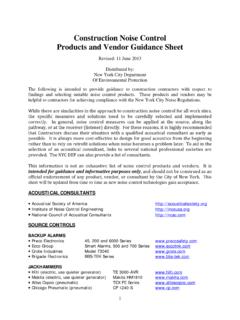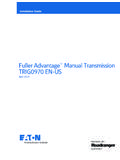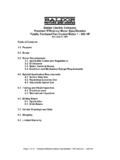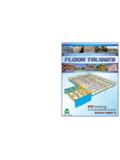Transcription of Control Valve Sourcebook - Oil and Gas - Emerson
1 Control VALVESOURCEBOOKOIL & GAS 2013 Fisher Controls International LLC. All rights , Cavitrol, Control Disk, easy e, easy Drive, ENVIRO SEAL, FIELDVUE, High Seal, NotchFlo, WhisperFlo, Whisper Trim, andVee Ball are marks owned by one of the companies in the Emerson Process Management business unit of Emerson Electric Process Management, Emerson , and the Emerson logo are trademarks and service marks of Emerson Electric Co. All othermarks are the property of their respective owners. The contents of this publication are presented for informational purposes only, andwhile every effort has been made to ensure their accuracy they are not to be construed as warranties or guarantees, express orimplied, regarding the products or services described herein or their use or applicability.
2 All sales are governed by our terms andconditions, which are available upon request. We reserve the right to modify or improve the designs or specifications of such productsat any time without notice. Neither Emerson , Emerson Process Management, nor any of their affiliated entities assumes responsibilityfor the selection, use, or maintenance of any product. Responsibility for proper selection, use, and maintenance of any product remainssolely with the purchaser and end publication may not be reproduced, stored in a retrieval system, or transmitted in whole or in part, in any form or by any means,electronic, mechanical, photocopying, recording or otherwise, without the written permission of Fisher Controls International in of ContentsPreface: Oil and Gas Value StreamSection 1: Control Valve Sizing and SelectionChapter 1: Control Valve SelectionChapter 2: Actuator SelectionChapter 3: Liquid Valve SizingChapter 4.
3 Gas Valve SizingChapter 5: Control Valve NoiseChapter 6: Control Valve Cavitation and FlashingSection 2: Oil and Gas Control Valve ApplicationsChapter 7: Onshore Oil and Gas ProductionChapter 8: Offshore Oil and Gas ProductionChapter 9: Natural Gas TreatmentChapter 10: FractionationChapter 11: Oil and Gas TransportationChapter 12: Natural Gas StorageChapter 13: LNG LiquefactionChapter 14: LNG Receiving Oil and Gas Control Valve Sourcebook is in-tended to be a resource to aid in the understand-ing of Control Valve applications for the oil and gasindustry. Under no circumstances should this in-formation alone be used to select a Control Valve considerations should be reviewed withyour Fisher sales office or representative as partof any Valve selection or specification I of this book covers Control Valve sizingand selection basics.
4 If not familiar with controlvalve terminology it is recommended that this sec-tion be reviewed before moving on to Section II covers the basics of oil and gas produc-tion and transportation processes with a focus oncommon Control Valve applications. Below is ageneral flow diagram of the major topics coveredwithin this section in this edition, and where they fitwithin the oil and gas value chain:Oil and Gas Value ChainE1542 GASTREATMENTWELLHEADFLUIDOILREFINERYCHAP TERS7, 8, & 9 CHAPTER11 CHAPTERS12 & 13 CHAPTER10 CHAPTER14 NGLEND USEGASEND USEWATERINJECTIONOR DISPOSALWATERTREATMENTOILTREATMENTOILTRA NSPORTATIONGASTRANSPORTATIONGASLIQUEFACT IONGASSTORAGELNGRECEIVINGLNGTRANSPORTATI ONGASFRACTIONATIONOIL, GAS, & WATERSEPARATIONS ection II starts where all oil and gas starts, thewellhead.
5 For any given well a combination of oil,water, and natural gas is produced among otherminor constituents. After production the fluid needsto be processed in order to meet customer spe-cifications. The first process is the separation ofthe components. Descriptions of separation pro-cesses in onshore and offshore production facilit-ies can be found in Chapters 7 and 8. Not coveredin this edition are secondary and tertiary produc-tion processes, including heavy oil and bitumenproduction. Look for this information in a separation, the oil, gas, and water streamsneed further processing before they are ready forsale, disposal, or reinjection into a 9 is dedicated to gas treatment pro-cesses, including dehydration and sulfur oil treatment process descriptions can befound in Chapters 7 and 8.
6 After the oil is treated itis transported to a refinery. For details on controlvalves for refining applications please refer to theFisher Refining Control Valve Sourcebook . Notcovered in this edition are water treatment pro-cesses. Look for this and more information on oiltreatment in a future separation, dehydration, and sulfur removal(if needed) natural gas is usually sold as is to anend user. Often, however, higher value natural gasliquids such as ethane, propane, and butane canbe separated out of the natural gas and sold indi-vidually. Chapter 11 covers the natural gas frac-tionation treatment the oil and gas is ready for trans-portation.
7 Chapter 10 covers traditional onshoretransportation of both oil and gas. Because thereare seasonal fluctuations in demand for naturalgas, natural gas storage is required (Chapter 12).Liquefying natural gas (Chapter 13) is performedto reduce its volume (1/600th) in order to easilytransport it around the globe. Once at its end des-tination the LNG needs to be re-gasified beforesale to an end user (Chapter 14).The content in this Sourcebook is continually awork in progress, with future editions intended toexpand upon, amend, and add to existing further information, or to answer any ques-tions, please contact your local Fisher sales officeor 1: Control Valve Sizing and 1 Control Valve SelectionPicking a Control Valve for a particular applicationused to be straightforward.
8 Usually only one gen-eral type of Valve was considered, a sliding-stemvalve. Each manufacturer offered a product suit-able for the job, and the choice among them de-pended upon such obvious matters as cost, deliv-ery, vendor relationships and user , Control Valve selection is considerablymore complex, especially for engineers with limit-ed experience or those who have not kept up withchanges in the Control Valve many applications, an assortment of sliding-stem and rotary Valve styles are available. Someare touted as universal valves for almost any sizeand service, while others are claimed to be opti-mum solutions for narrowly defined needs.
9 Eventhe most knowledgeable user may wonder wheth-er they are really getting the most for their moneyin the Control valves they have been most decisions, selection of a Control valveinvolves a great number of variables. Presentedhere is an overview of the selection process. Thediscussion includes categorization of availablevalve types and a set of criteria to be considered inthe selection Categories of Control valves Control Valve in this discussion means any pow-er-operated Valve , whether used for throttling orfor on-off Control . Other Valve varieties such asmotorized gate valves , louvers, pinch valves andself-operated regulators are not considered 1-1.
10 Modern Control Valve combines actuator, Valve assembly and digital Valve controller to provide maximum performance in awide variety of Control major Valve types, sliding-stem and rotary, arefurther divided within Table 1-2 into a total of ninesubcategories according to relative performanceand cost. Despite variations found within eachcategory, such as cage-guiding versus stem-guid-ing, all valves within a given subcategory may beconsidered very much alike in the early stages ofthe selection a Valve involves narrowing down to oneof these nine subcategories and then comparingspecific valves in that 2 Figure 1-2.
















